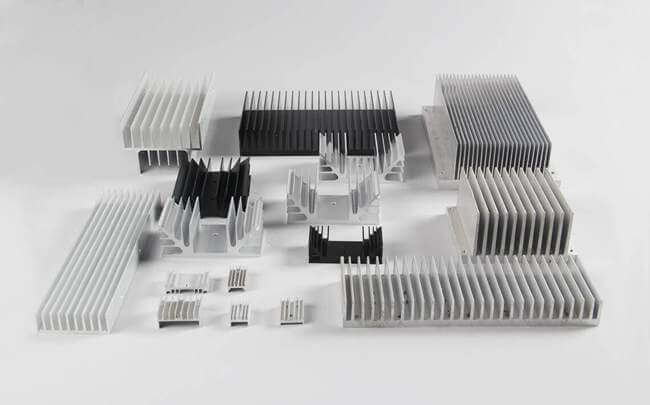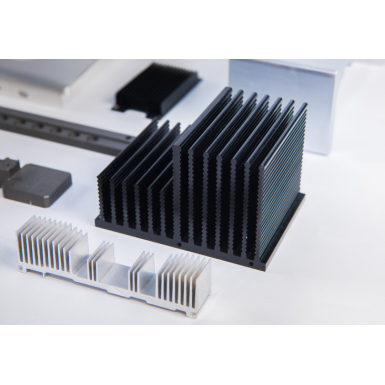Heat sink
Composition materials: Aluminum is the most common material for heat sinks. In particular, extruded aluminum heat sinks fit the needs of most projects. The metal is lightweight and has relatively good thermal conductivity.
BENEFITS
1. Lightweight
Aluminum is a light metal with a density of only 2.7g/cm, about a third that of steel and copper (7.85g/cm and 8.9g/cm). Therefore, it is used to make heat sink enclosure. The weight of aluminum profile is lighter under the same volume, and the lightweight aluminum profile is put into production to make light and thin aluminum heat sink enclosure, which is very consistent with the current trend of the pursuit of light and thin products.
2. Corrosion resistance
The working environment of the heat sink is complex, and the selected raw materials will be able to pass the corrosion resistance. Aluminum can form a dense oxidation film on the surface to prevent further corrosion inside, and after surface treatment, the aluminum heat sink has better corrosion resistance. Therefore, aluminum profile with this point can be used in the actual standing, not in the later period because of metal corrosion and affect the aesthetic and thermal performance.
3. Thermal conductivity
Heat conduction or heat dissipation ability is one of the indispensable properties of heat sink. The thermal conductivity value of aluminum is 204/W·(m·k), but the hardness of pure aluminum is low, deformation is easy to occur when heated, and the pure aluminum into aluminum alloy can not only ensure excellent thermal conductivity, but also ensure the aluminum heat sink has a long service life.
Often can take copper and aluminum to compare when raw material in the industry, although copper is better than aluminum really on thermal conductivity property, but cannot realize lightweight body, also want higher than aluminum alloy on cost, because this aluminum profile heat sink is more popular on market.
4. The non-magnetic
Non - magnetic is also an important property of the heat sink enclosure. Among them, the heat sink enclosure put into audio and electronic products should be non-magnetic. In order to avoid interfering with the transmission of signals, while the aluminum alloy, which does not contain iron, cobalt, nickel and other metals, is not magnetic, so as not to interfere with the normal operation of audio and electronic products.
5. Plasticity
The specific tensile strength, yield strength, ductility and corresponding work-hardening rate of metals all affect the range of shape variables. So different metals have differences in plasticity, and aluminum alloy is easy to forge and has a high plasticity, which is widely used in industry.
Some popular types of Heat sink:
 Extruded Heat Sinks
Extruded Heat Sinks
.jpg)
.jpg)










